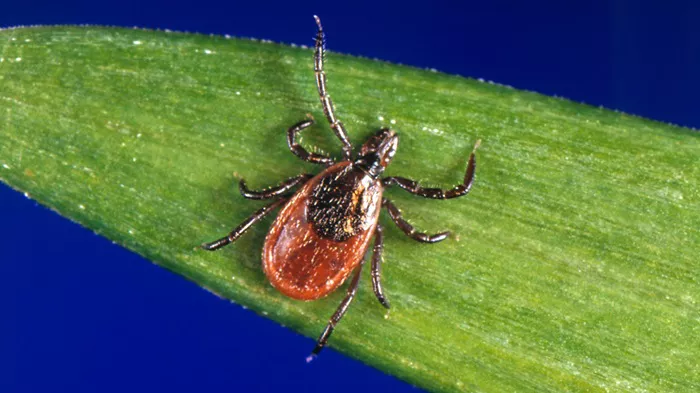Burns can be life-changing, not just because of the initial pain but because of the lasting marks they often leave behind. Long after the wound has healed, many people are left with discolored patches of skin—red, brown, purple, or even white. These changes in pigmentation can affect your confidence and self-image. Whether the burn came from a hot iron, boiling water, chemical exposure, or a kitchen accident, the aftermath can linger in your reflection. And when the skin finally closes over, one haunting question remains: will this discoloration ever go away?
Burn discoloration is a complex issue because it depends on the severity of the burn, the area of the body affected, and how your skin heals. Some discolorations fade with time. Others may remain unless treated. Understanding what causes discoloration, how the skin responds, and what treatments are available can help you navigate recovery with more clarity and confidence. The skin has an incredible ability to regenerate, but patience, care, and sometimes professional intervention are essential.
What Causes Skin Discoloration After a Burn?
Burn-related discoloration happens as part of the skin’s natural healing process. When the skin is burned, the body reacts with inflammation, and the pigment-producing cells, called melanocytes, are affected. In some cases, the burn causes these cells to produce too much melanin, leading to hyperpigmentation—a darkening of the skin. In other situations, the skin may lose pigment entirely, leading to hypopigmentation, which looks like a pale or white spot.
The depth of the burn plays a major role. Superficial burns, like mild sunburns or first-degree burns, usually heal without significant discoloration. Second-degree burns, which damage deeper layers of the skin, are more likely to leave dark or red patches. Third-degree burns, which destroy multiple layers of skin, often lead to lasting discoloration and scarring. Inflammation, infection during healing, and even sun exposure can make discoloration worse or cause it to persist longer.
Your skin tone also matters. People with darker skin tones tend to experience more noticeable pigmentation changes because their melanocytes are more reactive. Even a small injury can result in deep, long-lasting marks. The emotional effects can be significant as well, especially when the discoloration occurs on visible areas like the face, neck, or arms.
How Long Does Burn Discoloration Last?
There is no single answer to how long burn discoloration lasts. For some, the skin tone returns to normal within a few weeks or months. For others, the discoloration may linger for years or even become permanent. The healing timeline depends on the type of burn, how it was treated, and how your individual skin responds to injury.
In cases of mild to moderate burns, discoloration may start to fade after the initial wound heals, which usually takes two to three weeks. Over the next few months, the darkened or reddened skin may gradually blend in with the surrounding area. However, deeper burns may result in skin that remains visibly different in texture and color.
It’s important to understand that healing happens in phases. Even after the skin looks “healed” on the surface, there is still activity happening beneath. New collagen is forming, pigment is stabilizing, and the skin is adapting. That’s why you might see your discoloration slowly shift in appearance over time. The process is slow, but not static. Using the right skincare can help accelerate improvement.
Can Skincare Products Help Fade Burn Discoloration?
Skincare can play a major role in improving the appearance of burn discoloration, especially if you start early in the healing process. Once the wound has completely closed and there is no more raw or oozing skin, topical treatments can support the recovery of pigment and texture. The most effective products often include ingredients known for brightening and evening out skin tone.
Vitamin C is one of the best choices. This antioxidant helps reduce pigmentation by blocking the enzyme that stimulates melanin production. It also supports collagen production, which is vital for rebuilding damaged skin. Niacinamide, another skin-brightening agent, works to calm inflammation and fade dark spots without irritating sensitive skin.
Silicone gels and sheets are widely used in burn care. They help keep the skin hydrated and protected while softening the appearance of scars and discoloration. They are often recommended by dermatologists and burn specialists because they create a barrier that encourages smoother healing.
Retinoids, derived from vitamin A, are also effective. They speed up skin cell turnover, encouraging new, evenly pigmented cells to replace discolored ones. However, retinoids can be harsh, especially on newly healed skin, so they must be introduced carefully, ideally under the guidance of a skincare professional.
Consistent sun protection is a must. UV exposure can darken existing discoloration and make it much harder to fade. Always apply a broad-spectrum sunscreen with SPF 30 or higher, even if you’re staying indoors. UV rays can penetrate windows and worsen pigmentation.
When Does Burn Discoloration Become Permanent?
Burn discoloration may become permanent if the skin’s pigment cells are severely damaged or destroyed. This is more common with third-degree burns or burns that became infected or weren’t treated properly. If the skin is left with no pigment at all, this hypopigmentation may be permanent, especially in people with darker skin tones. Similarly, if excess scar tissue forms and traps pigment, the discoloration may not fully fade on its own.
Burns that result in keloids or hypertrophic scars can leave behind reddish or purplish areas that persist for years. These types of discoloration are related to excess collagen production during healing. While the scar may flatten over time, the color change may remain, especially if not treated early.
Even when discoloration is long-lasting, it doesn’t mean all hope is lost. Dermatological treatments can often improve the appearance of pigment imbalance, even years after the injury. The sooner you begin treatment after the skin has closed, the better your chances of significant improvement.
Are Medical Treatments Effective for Burn Discoloration?
When topical treatments don’t deliver the desired results, medical procedures can provide more dramatic improvement. These treatments are especially helpful for long-standing or severe discoloration.
Laser therapy is one of the most popular methods. Certain lasers target excess pigment in the skin, breaking it down so the body can naturally remove it. Other lasers stimulate collagen production to improve texture and color. For hypopigmented areas, excimer lasers may encourage pigment cells to reactivate.
Chemical peels are another option. These treatments use acids to remove the top layer of skin, revealing fresh, evenly pigmented skin beneath. Medium or deep chemical peels can be effective for post-burn discoloration, but they must be done by experienced professionals to avoid further irritation or injury.
Microneedling can also help by creating tiny wounds that stimulate healing and encourage more even pigmentation. It’s often combined with topical treatments to enhance absorption and results.
In some cases, dermatologists may recommend corticosteroid injections to reduce inflammation and improve redness or raised scars. Light therapy and intense pulsed light (IPL) treatments may also be used to reduce redness and hyperpigmentation.
Before undergoing any of these procedures, it’s essential to consult with a board-certified dermatologist or burn specialist. They can evaluate your skin type, burn history, and goals to create a customized treatment plan that balances safety and results.
What Role Does Time Play in Healing?
Time is both your enemy and your ally when it comes to burn discoloration. On one hand, discoloration often improves slowly. On the other, many cases do fade significantly over time with the right care and patience. The body’s natural healing processes are powerful, and the skin can undergo surprising transformations within a year or two after the burn.
However, time alone isn’t always enough. Passive waiting, without skincare or sun protection, often leads to stagnation or worsening discoloration. Active support—using moisturizers, silicone treatments, brightening serums, and sunscreen—helps guide your skin toward healthier regeneration.
The emotional side of healing also takes time. Burn discoloration can be a constant reminder of trauma or pain, especially for those with burns in visible areas. Learning to care for your skin becomes a form of self-respect and healing, not just physically but emotionally.
Support from burn survivor groups, counselors, or dermatologists can help you manage expectations and develop a healthy outlook. Time can bring perspective, acceptance, and—often—a great deal of visible improvement.
Can Discoloration Be Prevented After a Burn?
Preventing discoloration is easier than treating it, and the first step starts during the healing process. The most important rule is: do not pick at your burn. Let it heal naturally, and avoid removing scabs or peeling skin. Every time you interfere with healing, you increase the risk of infection and pigment changes.
Keeping the area moist and covered with an antibiotic ointment or prescribed burn cream helps reduce inflammation and promote even healing. Once the skin has re-epithelialized (closed), use silicone gel or silicone sheets to reduce the risk of raised scars and dark spots.
Daily sun protection is crucial, even if you’re not outside much. UV exposure makes discoloration worse and longer-lasting. Protect the area with sunscreen, long sleeves, or a bandage until it’s no longer photosensitive.
Even hydration plays a role. Well-moisturized skin heals better, and using fragrance-free, gentle lotions can help maintain the skin barrier. Stay hydrated from the inside out by drinking enough water and eating a balanced diet rich in skin-repairing vitamins like C, E, and zinc.
Final Thoughts
Yes, burn discoloration can go away—but not always on its own, and not always completely. The good news is that many people see significant improvement with the right skincare, sun protection, and patience. Even stubborn discoloration can be lightened with the help of dermatological treatments, and advances in laser and pigment therapy are giving burn survivors better options than ever before.
While your skin may never return to its exact pre-burn state, it can regain clarity, smoothness, and a more even tone. Most importantly, the discoloration doesn’t define you. With time, care, and the right support, both your skin and your self-confidence can heal. The journey may be long, but the destination is worth the effort.
Related Topics



































